
may 17–SEPTEMBER 4, 2006

50 Favorites
When we decided to highlight fifty great works, we thought it would be intriguing to ask the public for their favorites.
The votes are in, and people of all ages and walks of life told us what their favorite means to them. All fifty are on display with comments from the public.
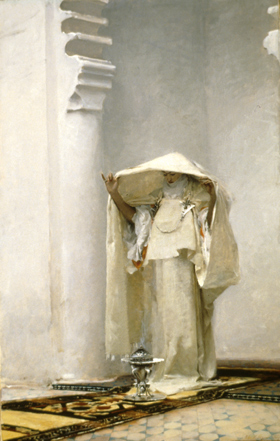
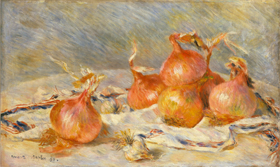
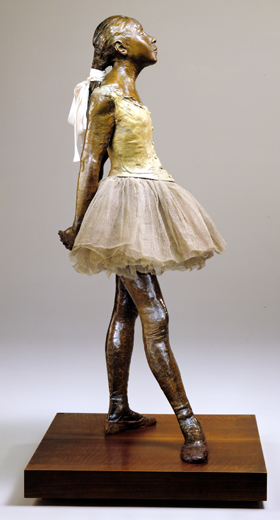
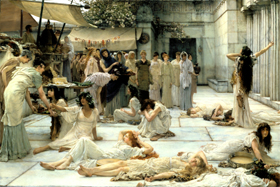
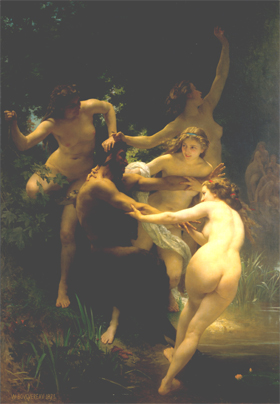
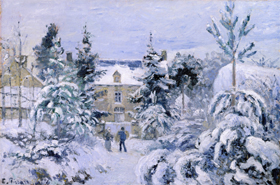
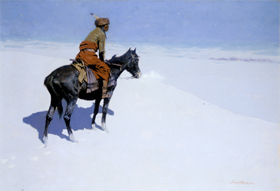

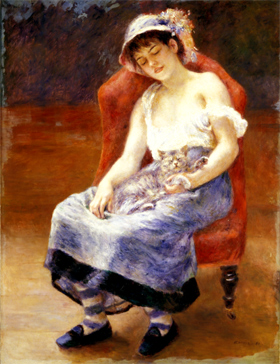
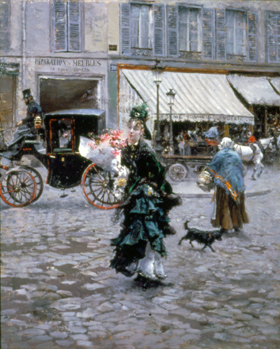
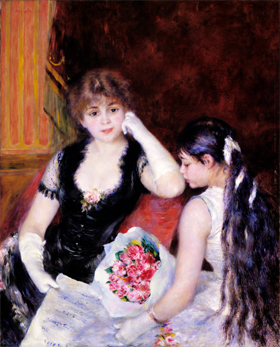
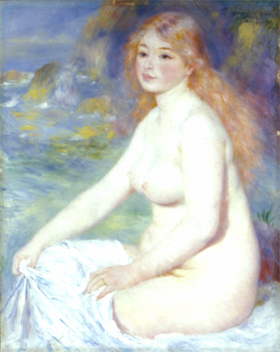

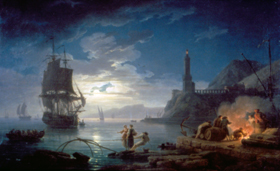
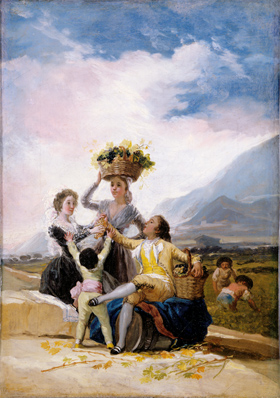
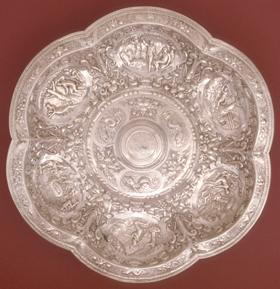
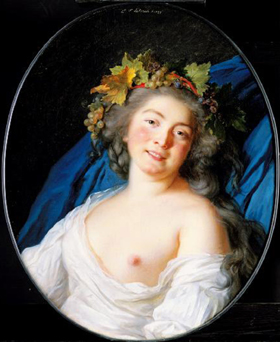
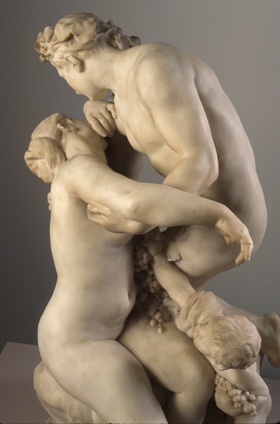
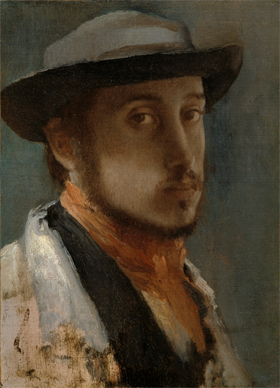
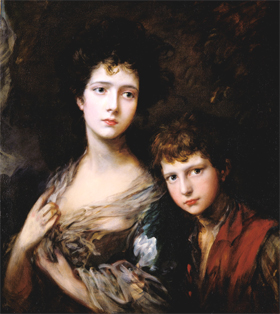
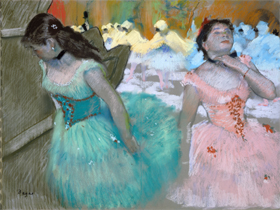
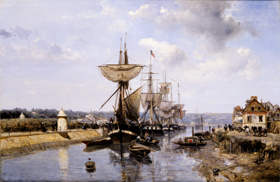
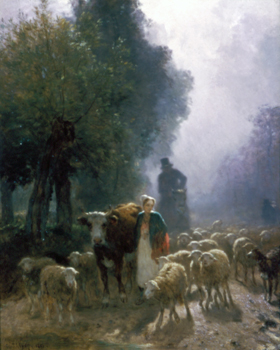
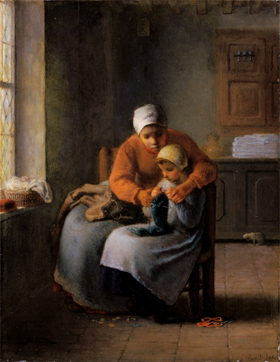
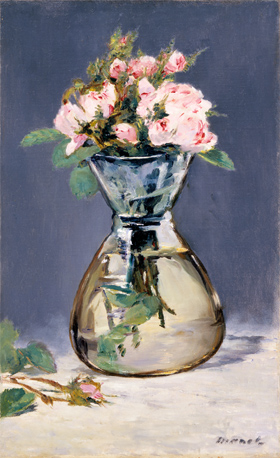
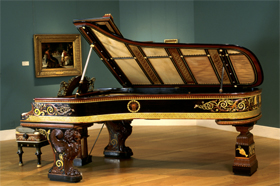
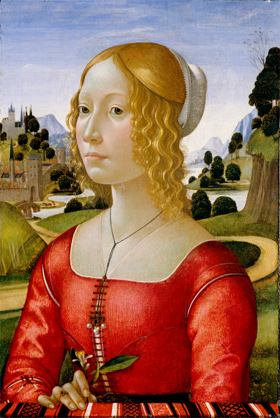
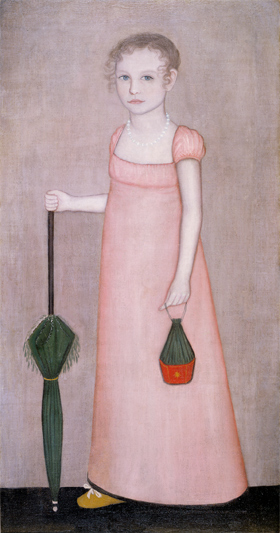
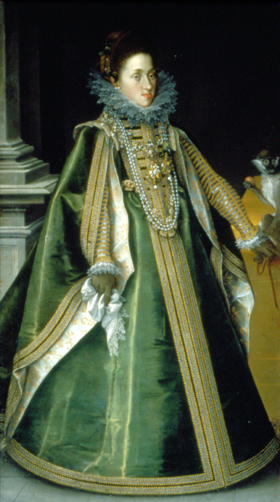
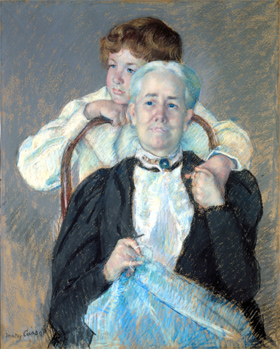
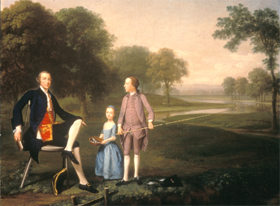
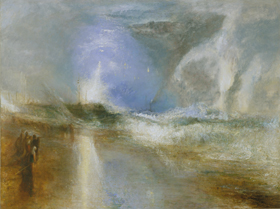
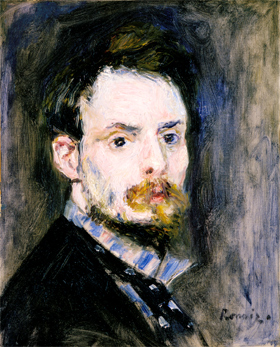
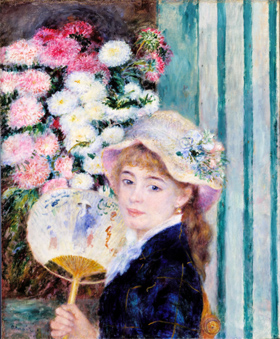
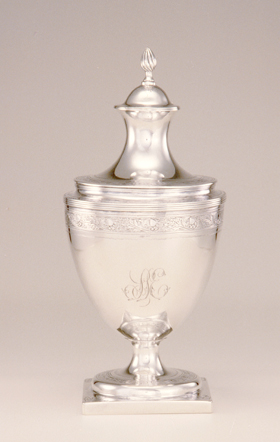
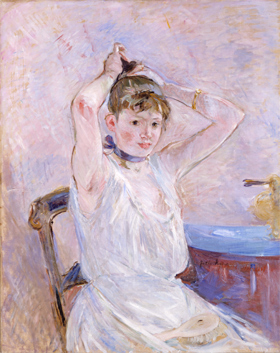

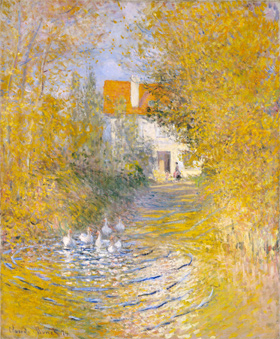

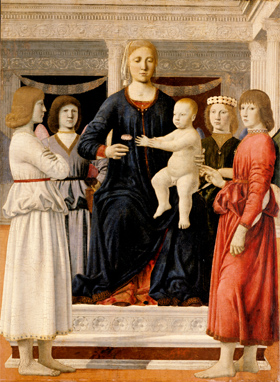
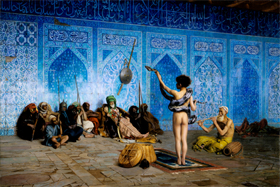
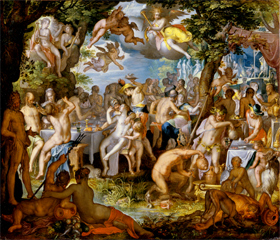
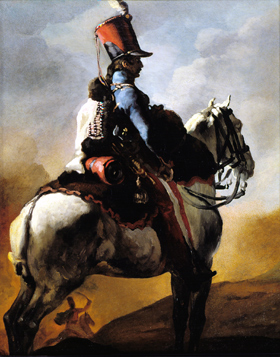
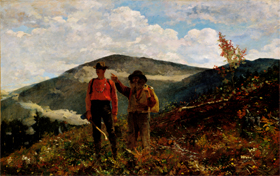
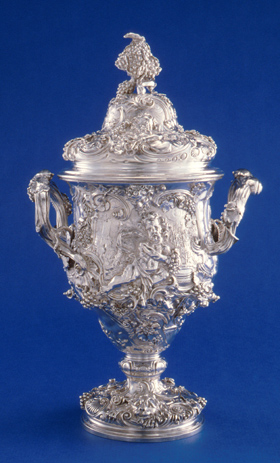
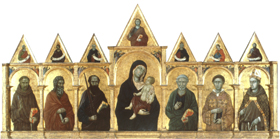
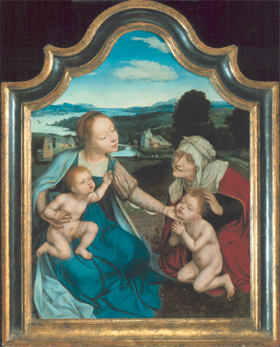
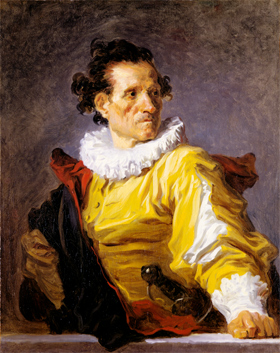

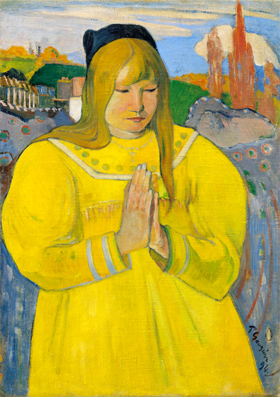


















































John Singer Sargent
American, 1856–1925
Fumée d'ambre gris (Smoke of Ambergris)
1880
Oil on canvas
Acquired by Sterling Clark, 1914
1955.15
This masterpiece received more votes than any other work in the Clark collection, making it the overwhelming favorite. People from Williamstown to Texas find it "mesmerizing," "haunting," provocative," and "mysterious." Shannon Ferryall of Pittsfield, Massachusetts, wrote, "I can't put it into words. The painting just speaks to me."
Others said:
"This haunting, mysterious, deeply evocative, white-on-white tour de force represents everything I cherish about the entire collection. No reproduction can ever come close to the palpable reality of standing before it."
Joseph Wolf III
Sales
Massapequa Park, New York
Member since 2001
"It's fascinating, it's mysterious, it's luminous. I felt lost when it was on loan."
Lisa M. Avery
X-ray Technologist/Performing Artist
Pittsfield, Massachusetts
Member since 1998
"Sargent captured the essence of mystery in this painting, and that continues to enthrall me year after year, visit after visit. Why? I don't really know. And to be honest, I hope I never do. The speculation is what captivates me."
Shaun P. O'Connell
Contract Manager
Middleboro, Massachusetts
Member since 1999
"This was the first painting I saw on my first visit to the Clark nearly ten years ago. I was dazzled. The painting glowed."
Elizabeth Pond Reza
Mother/Homemaker
Great Barrington, Massachusetts
"Since my first visit to the museum I remember being immediately drawn to it in an almost spiritual way. When it traveled to Boston for an exhibition I followed."
Mary D. Rogers
Teller
Sunderland, Massachusetts
Member since 1998
Pierre-Auguste Renoir
French, 1841–1919
Onions
1881
Oil on canvas
Acquired by Sterling and Francine Clark, 1922
1955.588
"While Renoir was justly famous for his female nudes, these naked onions are the painting that I would take home to live with. They both celebrate the beauty to be found in humble origins and the ecstasy experienced by a northerner on his contact with the light and sensuality of the Mediterranean. They are waiting willingly to be sautéed with garlic and oil for the noonday meal."
James Wood
Former Director of the Art Institute of Chicago and Clark Trustee
Bristol, Rhode Island
"My favorite painting is of the onions sitting on the table. I love to eat onions! If I had to write about onions I could write at least five different stories. If I had to rate this painting between one through five I would definitely rate it a big five! My friends even thought it was cool and funny."
Michael Gancarz
Fourth Grade
Gabriel Abbott Memorial School
Florida, Massachusetts
Hilaire Germain Edgar Degas
French, 1834–1917
Little Dancer of Fourteen Years
1880–81
Bronze with gauze tutu and silk ribbon, on wooden base
Acquired by Sterling and Francine Clark, early 1920s
1955.45
"Every time I go to the Clark, I want to see her. She is my very, very favorite! I like her pose. I have gone to see her lots of times. Sometimes I even ask my mom to take me."
Christina A. Butcher
Second Grade
Stamford Elementary
Stamford, Vermont
Sir Lawrence Alma-Tadema
English, born Netherlands, 1836–1912
The Women of Amphissa
1887
Oil on canvas
Acquired by the Clark, 1978
1978.12
"Alma-Tadema's painting so beautifully and expertly captures Plutarch's story, illustrating the spirit and strength of women and peace in a time of war. I love the elements of sisterhood—of the modest women of Amphissa protecting the lovely and languid women of Phocis. Alma-Tadema's clean, blue-hued palette has the feel of early morning and of sins forgiven—or forgotten—in a new beginning."
Lani Stack
Writer
North Bennington, Vermont
"As an undergraduate at Williams twenty-five years ago, I was captivated by this work. The mystery and narrative component are compelling, as is the masterful academic realism. I sadly don't get back to the Clark very often, but when I do, I am still drawn immediately to this canvas."
Robert Burge
Art and Antique Dealer
New York, New York
William Bouguereau
French, 1825–1905
Nymphs and Satyr
1873
Oil on canvas
Acquired by Sterling and Francine Clark, 1942
1955.658
"Because it is almost impossible to select one favorite, I decided on one I'd miss for the smile and delight it gives me. William Bouguereau's Nymphs and Satyr is my choice. It delights in the lovely flesh of the nymphs and the overwhelmed look in the satyr's face. It's just fun!"
Dr. Hannelore Wilfert
Professor of German
Troy, New York
Member since 1992
"It is the first work of art that made my eyes bug out. I was seven at the time."
Dusty Bahlman
Reporter, The Berkshire Eagle
Williamstown, Massachusetts
Member since 2001
Camille Pissarro
French, 1830–1903
Piette's House at Montfoucault
1874
Oil on canvas
Acquired by Sterling and Francine Clark, 1941
1955.826
"I was drawn to this picture because the scene reminds me of our home in Canada after a heavy snowfall. The branches of our blue spruce and yews are bent almost to the ground, under the burden of the snow. I love the texture of the white paint and the way Pissarro applied it generously over the dark green of the branches. The whole scene seems almost encased in snow."
Anne E. Waring
Retired Teacher
Ontario, Canada
Member since 2000
Frederic Remington
American, 1861–1909
The Scout: Friends or Foes
c. 1900–05
Oil on canvas
Acquired by Sterling and Francine Clark, 1951
1955.12
"Its tranquility is overwhelming—the still of the night, the starry skies, and a lone soul in the vastness of God's world. The serenity and calm is overpowering. The painting is majestic."
Joan B. Fromm
Franklin Lakes, New Jersey
Member since 1998
Winslow Homer
American, 1836–1910
Sleigh Ride
c. 1890–95
Oil on canvas
Acquired by Sterling and Francine Clark, 1944
1955.771
"Who hasn't imagined being on a sleigh going over a hill with the rut glistening from the light of the sun on the icy snow? There is the abstract quality of a winter day, a bird sailing in the sky. Sleigh Ride is—for me—the visual counterpart of Frost's 'Stopping by Woods on a Snowy Evening.' They are both magical."
Jack Hyland
Investment Banker and Clark Trustee
New York, New York
Pierre-Auguste Renoir
French, 1841–1919
Sleeping Girl with a Cat
1880
Oil on canvas
Acquired by Sterling and Francine Clark, 1926
1955.598
"The red is eye-catching and the blue is calming. The cat looks more comfortable than the girl. I think this is a universal truth."
Roslyn Webber
Engineer
Troy, New York
Giovanni Boldini
Italian, 1842–1931
Crossing the Street
1875
Oil on panel
Acquired by Sterling and Francine Clark, 1925
1955.650
"It is a simply beautiful picture, focusing on a gorgeous young woman dressed in blue, the dominating color of the picture. It is full of interest, whimsy, character, intrigue, and unanswered questions, which is why I adore it. . . . The young woman is crossing the busy Paris street, coming toward us. She holds a stunning pink bouquet in one hand and lifts her skirts from the road with the other. A little dog with a collar walks near her. Is it hers? . . . Driving by in a carriage, a "Gable"-esque looking man ogles the young woman. . . . Gorgeous young beauty is crossing the street, her feet are coming toward us. But her upper body and face are slightly turned toward the carriage and the roué. She's aware of him; her face has a quizzical look. Is there a future story here?"
Deborah Mitrani
Retired
Ancramdale, New York
Member since 1984
Pierre-Auguste Renoir
French, 1841–1919
At the Concert
1880
Oil on canvas
Acquired by Sterling and Francine Clark, 1928
1955.594
"Though the Clarks collected several different artists, nowhere is their passion for an artist as evident as with Renoir. At the Concert epitomizes what the Clarks so loved about Renoir at the peak of his Impressionist powers. The piece is drop-dead gorgeous in its own right, but the subject of beautiful young women in fashionable contemporary surroundings, painted with tender soft brushstrokes and masterful choice of complementary color, is pure Renoir at his finest. Renoir himself once said something to the effect that a painting should be a thing of beauty, something to please the eye, and the Clarks understood this completely. If there is one piece that sums up the Clarks' passion for Renoir and Impressionism at its best, this is it!"
Thomas Archambeau, M.D.
Diagnostic Radiologist
Okemos, Michigan
Member since 1996
Pierre-Auguste Renoir
French, 1841–1919
Blonde Bather
1881
Oil on canvas
Acquired by Sterling and Francine Clark, 1926
1955.609
"For some reason, this lovely picture makes me weep. Perhaps it's the delicate beauty, or perhaps the innocence it depicts. The first time I viewed it was at the Clark, the second time was in Dallas during a Renoir traveling exhibit. Again, tears sprang to my eyes, I stood there in a room full of people—unabashedly weeping, filled with a silent joy."
Margaret Lewis
Retired
Pittsfield, Massachusetts
Member since 1979
Henri de Toulouse-Lautrec
French, 1864–1901
Carmen
1885
Oil on canvas
Acquired by Sterling and Francine Clark, 1951
1955.525
David Wilson
Retired English Teacher
Williamstown, Massachusetts
Member since 1999
Claude Joseph Vernet
French, 1714–1789
Coastal Scene in Moonlight
1769
Oil on canvas
Acquired by the Clark, 1977
1977.17
"I love this painting. It is not only a beautiful scene of a harbor in the moonlight, it is a painting that tells a story. Every time I look at this work I see a different detail. As with any good piece of art, it attracts your attention to detail and challenges your imagination. What are all those people doing on the harbor at night? What cargo is being hauled? What a magnificent work of art."
Daniel Bosley
State Representative, First Berkshire District
North Adams, Massachusetts
Francisco José de Goya y Lucientes
Spanish, 1746–1828
Autumn
1786
Oil on canvas
Acquired by Sterling and Francine Clark, 1939
1955.749
"The charm and gaiety of the figures in the immensity of the landscape remind us of the fragility and transience of life."
Alice Wohl
Independent Scholar
Housatonic, Massachusetts
Member since 2003
Makers Mark IV with a star below
Basin
London, 1618–19
Silver
The arms are those of Edgcumbe of Mount Edgcumbe, county Devon
Acquired by the Clark in honor of Charles Buckley
1989.2
"I like this plate because it has amazing designs etched on it and it is made of silver. It has detailed pictures on it and tells a story, but I am not sure what the story is about. I really like the sea monsters on the rim. If you look closely at the corner indents you can see what looks like angels to me."
Brandon Fields
Fourth Grade
Gabriel Abbott Memorial School
Florida, Massachusetts
Marie Louise Elisabeth Vigée-Lebrun
French, 1755–1842
Bacchante
1785
Oil on canvas
Acquired by Sterling and Francine Clark, 1939
1955.954
"What impresses me most about Vigée-Lebrun's Bacchante is the artist's ability to capture the attitude of abandonment I would imagine in a follower of Dionysus. Her ruddy cheeks, half-closed eyes, and the general disarray of hair and clothing create the image of a woman catching a quick breath before the revelry begins again. As my eye catches hers, it is almost as if she is inviting me to come along."
Jessica L. Fripp
Class of 2005
Graduate Program in the History of Art
Williamstown, Massachusetts
Aimé Jules Dalou
French, 1838–1902
Bacchus and Ariadne
1894
Marble
Acquired by the Clark, 1996
1996.3
"I think this sculpture is simply beautiful. The bodies of Bacchus and Ariadne are fluid and soft, conveying a feeling of intimate familiarity, rather than shame or vulnerability. I love the way Bacchus supports an overwhelmed Ariadne, and I love the way he looks down upon her so attentively, the way his hands are placed so gently on her arm and back as he tries to comfort, but not to frighten, this woman who laments the loss of her love. At the same time, however, we can hardly be in doubt of his feelings toward her. The sculpture creates such comfort, such warmth and passion between these two, that one cannot help but feel envious."
Elizabeth Evans
Junior, Wellesley College
Wellesley, Massachusetts
Hilaire Germain Edgar Degas
French, 1834–1917
Self-Portrait
c. 1857–58
Oil on paper mounted on canvas
Acquired by Sterling and Francine Clark, 1948
1955.544
"I first saw this work when I was finishing my Ph.D. (in 1989), and when I heard I was selected as a Clark Fellow for 2002 one of my first thoughts was that I would be able to view this work at my leisure. I love the presence of this work, the way it, I mean he, looks back. I never tired of going to it for another look."
Fred Bohrer
Art Historian and Clark Fellow, 2002
Washington, D.C.
Thomas Gainsborough
British, 1727–1788
Elizabeth and Thomas Linley
c. 1768
Oil on canvas
Acquired by Sterling and Francine Clark, 1943
1955.955
"Gainsborough is a kind of magician, and I've always liked a bit of magic. The way he painted Thomas Linley's chin, for example, . . . it's as if he's arrived at the line of the face not by painting the flesh, but by painting the shadow beside it. It's not flashy or anything, it's just a really clever bit of paint."
Michael Cassin
Curator of Education
Sterling and Francine Clark Art Institute
Williamstown, Massachusetts
Hilaire Germain Edgar Degas
French, 1834–1917
The Entrance of the Masked Dancers
c. 1879
Pastel on paper
Acquired by Sterling and Francine Clark, 1927
1955.559
"What do I love about this pastel? Beyond its spontaneity, its deliberate casualness, the freshness of its colors, the ambiguity of its space, and the contrast between the beautifully drawn faces and the shocking abstraction of the background, there is something uncanny in its construction: it is the unsettling way in which Degas draws me into the picture plane, tempting my eye with sensuous surfaces and textures, only to divulge a top-hatted gentleman in the background, half–concealed by the scenery. Degas situates me on the opposite side of the stage in a similar role, as an interloper in the dancers' private space. It is disconcerting to realize that the only figure that seems to meet my gaze is my counterpart peering out from the wings."
Jim Ganz
Curator of Prints, Drawings, and Photographs
Sterling and Francine Clark Art Institute
Williamstown, Massachusetts
Johan Barthold Jongkind
Dutch, 1819–1891
Frigates, Port of Harfleur
c. 1852–53
Oil on canvas
Acquired by the Clark in memory of Eugene W. Goodwillie, (Institute Trustee 1959–74), 1974
1974.4
"When I work at the Clark I get to walk by it a couple of times a day, and I always slow down a bit to look at it again. Things seem calm in what could be a busy time—five ships at dock and two more at a mooring. The tide seems to be out and people don't seem to be in a hurry."
Tom Merrill
Preparator
Sterling and Francine Clark Art Institute
Williamstown, Massachusetts
Constant Troyon
French, 1810–1865
Going to Market on a Misty Morning
1851
Oil on panel
Acquired by Sterling and Francine Clark, 1934
1955.880
"Oscar has lots to say when we look at this painting. 'Mooo brow wha' (brown and white cow) and 'baa wha' (white sheep) and 'die' (neigh, for horse) and 'wah' (walk, because they're on a walk). It's the first painting he chooses when we come to the museum."
Oscar Low, 19 months
As told to his mother, Molly H. Polk
Williamstown, Massachusetts
Jean–François Millet
French, 1814–1875
The Knitting Lesson
c. 1860
Oil on panel
Acquired by Sterling and Francine Clark, 1945
1955.533
"In a comfortable room with sturdy wooden ceiling beams, tiled floor, a cupboard at the back boasting a row of spoons and a pile of bright white laundry, a knitting lesson is taking place. This passing on of skills and tradition is amplified in pictorial terms. The vaguely pyramidal shape of the woman and girl echoes depictions of the Virgin and Child from the Italian Renaissance, while the leaded windowpanes evoke the prosperous bourgeois interiors seen in seventeenth-century Dutch paintings. Dressed in the white, red, and blue of the French flag, these French peasants are ennobled by artistic tradition."
Fronia Simpson
Art Historian and Columist for Interweave Knits
Bennington, Vermont
Edouard Manet
French, 1832–1883
Moss Roses in a Vase
1882
Oil on canvas
Acquired by Sterling and Francine Clark, 1924
1955.556
"The thing Manet is least interested in is flowers. What he is interested in is how the flowers are jammed into the vase. They're stuffed in and the life is squeezed out of them. What happens underneath the flowers—what we see through the water, the effects of water and the shapes created—is what this painting is about."
S. Lane Faison, Jr.
Director Emeritus
Williams College Museum of Art
Williamstown, Massachusetts
"I love the amazing double transparency of the glass vase and the water. The slate blue background and the pale pinks in the roses play off each other and the shine on the vase. There's a subtle distortion from the curve of the glass on the contents. No complicated reason I love it—the subject, colors, and paint handling all just appeal to me."
Sharon Clark
Education Coordinator
Sterling and Francine Clark Art Institute
Williamstown, Massachusetts
Designed by Sir Lawrence Alma–Tadema
English, born Netherlands, 1836–1912
Fall Painted by Edward J. Poynter
English, 1836–1919
Grand Piano and Pair of Stools
1884–87
Ebony veneer with boxwood, sandalwood, cedar, ivory, coral, mother–of–pearl, copper, brass, and pewter
Acquired by the Clark, 1997
1997.8
"This exquisite and fancy piano moves me, and it is not for the sound from its strings or pianists, for they sound kind of alike to me. It is the conception, design, craftsmanship, and ownership, and the constant trickle down that ripples through time since its late-nineteenth-century inception and forward into the future. The principal players (Marquand, Alma-Tadema, Codman, Poynter, Johnstone Norman, Steinway) have left us with the most interesting touchstone of superb quality, and a story that continues to unfold in the collections of our museums."
Hugh Glover
Furniture Conservator
Williamstown Art Conservation Center
Williamstown, Massachusetts
Domenico Ghirlandaio (Domenico di Tomaso Bigordi)
Italian (Florentine), 1449–1494
Portrait of a Lady
c. 1490
Tempera and oil on panel
Acquired by Sterling Clark, 1913
1955.938
"I love the early Italian Renaissance and I especially love the beautiful intense color that has survived for six centuries."
Elizabeth Clark
Retired
Dalton, Massachusetts
Member since 2004
Ammi Phillips
American, 1788–1865
Portrait of Harriet Campbell
c. 1815
Oil on canvas
Gift of Oliver Eldridge in memory of Sarah Fairchild Anderson, teacher of art, North Adams Public Schools, daughter of Harriet Campbell, 1991
1991.8
"Have you ever seen a portrait and felt like you knew the person? Or wanted to know them? Well, my wife, Jessica, and I looked at this painting and realized that we would know this person . . . we both fell in love with her and decided to name our as-yet-unconceived daughter after her. We look forward to bringing young Harriet Campbell Harris to the Clark to meet the inspiration behind her name."
Jessica and Matt Harris
Documentary Filmmaker and Venture Capitalist
Williamstown, Massachusetts
Members since 1998
Joseph Heintz, the Elder
German, 1564–1609
Portrait of Konstanze von Habsburg, Archduchess of Central Austria, Later Queen of Poland
1604
Oil on canvas
Gift of Julius S. Held, 1982
1982.127
"This particular painting is outstanding because of its size, detail, and overall beauty. . . . The subtlety of shadowing highlights the intricate patterns in the gown. I cannot imagine how the artist was able to reproduce these patterns in what it seems is an endless repetition."
Larry Phillips
Retired
Cheshire, Massachusetts
Mary Stevenson Cassatt
American, 1844–1926
Portrait of Mrs. Cyrus J. Lawrence and Her Grandson, R. Lawrence Oakley
c. 1898–88
Pastel on paper
Gift of Mrs. R. Lawrence Oakley & Mrs. Eileen W. Payne, 1975
1973.36
"Of all the Cassatts at the Clark, this one interests me the most. Done during her first trip back to the United States after over twenty years as an expatriate in Paris, it is one of several portraits her American friends persuaded her to undertake. She knew that the portrait style of John Singer Sargent and Cecilia Beaux was in vogue in wealthy American circles, so she played off of it. The elegant costumes and easy poses of the sitters give the portrait the aristocratic grace that had become so popular for portraits of this type. But at the same time, Cassatt's careful delineation of the rather plain facial features does not flatter them the way Sargent or Beaux might have. In America, Cassatt's critics (and probably her sitters) admired her rejection of the 'pretty-pretty' but couldn't help but wish that she would do 'a little more pandering in this matter.'"
Nancy Mowll Mathews
Eugénie Prendergast Senior Curator of Nineteenth- and Twentieth-Century Art and Lecturer in Art
Williams College Museum of Art
Williamstown, Massachusetts
Arthur Devis
British, c. 1711–1787
Richard Moretan, Esq., of Tackley with His Nephew and Niece John and Susanna Weyland
1757
Oil on canvas
A gift of the estate of Florence Cluett Chambers, 2001
2001.1.6
"The young girl in the painting is offering fish caught by her brother in a basket made by Cree Indians in northern Canada. During the mid-eighteenth century, thousands of British soldiers went to North America to fight the French in the Seven Years' War. This small detail opens up a story of cross-cultural contact and exchange, and suggests how the British during this period experienced their colonial involvement in a distant land. It also suggests that children were commonly given foreign curios as 'educational toys.' Very similar baskets of the same period in the British Museum were given to a 'Miss Nellie Middleton,' probably the daughter of a naval officer who explored the coast of Hudson's Bay in the 1730s."
Ruth Phillips
Canada Research Chair in Modern Culture, Carleton University, Ottawa, and Clark Fellow, 2003
Joseph Mallord William Turner
English, 1775–1851
Rockets and Blue Lights (Close at Hand) to Warn Steamboats of Shoal Water
1840
Oil on canvas
Acquired by Sterling and Francine Clark, 1932
1955.37
"Incredibly powerful in composition—the color and the shapes expressing the rockets and a potential danger—even more so when at that time no one had seen such expressionistic art."
Thomas M. Futter
Retired
Northampton, Massachusetts
Member since 2001
Pierre-Auguste Renoir
French, 1841–1919
Self-Portrait
c. 1875
Oil on canvas
Acquired by Sterling and Francine Clark, 1939
1955.584
"The Self-Portrait challenges our usual view of Renoir's art as conventionally pleasant and beautiful. It is a picture of incredible psychological insight and visual power. I think it is a testament to the range of Mr. and Mrs. Clark's taste that they saw the value of acquiring such a provocative example of their favorite artist's work. The fluid brushstrokes and rich colors convey a sense of the artist's working process, as he sought to capture his own face as directly and honestly as possible."
Michael Conforti
Director
Sterling and Francine Clark Art Institute
Williamstown, Massachusetts
Pierre-Auguste Renoir
French, 1841–1919
A Girl with a Fan
c. 1881
Oil on canvas
Acquired by Sterling and Francine Clark, 1939
1955.595
"[During my preschool class's] field trip to the Clark . . . the children became 'friends' with the artists whose works are displayed and learned about some of the pictures they painted. The docent gave the children a very technical explanation about why the girl's eyes in this painting seemed to follow the viewer. One three-year-old listened intently and then muttered, 'I still think there is a puppet behind the painting.'"
Fern Murtagh
Preschool Teacher, Williamstown Elementary School
Williamstown, Massachusetts
Paul Revere, Jr.
American, 1734–1818
Sugar Bowl and Cover
Boston, c. 1795
Silver
Acquired with funds donated by Mr. and Mrs. Henry Morris Burrows, 1987
1987.108
"Among my favorites in the Clark's amazing collection is this diminutive treasure—nearly hidden from view amongst the splendor of the museum. I can picture the original owner, Miss Sarah Sargent Ellery, clapping her hands in delight at the combination of style, taste, beauty, and satisfying heft of this essential table accessory. It is restrained in design and ornament, yet its generous proportions and towering lid give it an imposing presence. In this sugar urn, beauty and function exist in perfect harmony, enlivened by graceful scrolls of acorns and leaves. There is a hint of deeper feeling in this ordered world—the twist of flame that forms the finial is like a beacon, alerting us to the fire that burns below the surface of silver, beneath the proper veneer of New England young ladies, and in the hearts of patriots willing to risk all for their country."
Kathleen Morris
Director of Exhibitions and Collections
Curator of Decorative Arts
Sterling and Francine Clark Art Institute
Williamstown, Massachusetts
Berthe Morisot
French, 1841–1895
A Girl Arranging Her Hair
1885–86
Oil on canvas
Acquired by Sterling and Francine Clark, 1949
1955.926
"Here is a woman captured in the midst of a very intimate act, yet her gaze tells us she is very aware that she is being looked at, which somehow gives her more power than if she avoided our eyes. She's getting ready to leave the privacy of her bedroom and go out in public, so she's fixing her hair and putting on perfume. For most women in the nineteenth century, inventing their appearance was one of the few creative outlets they had. But the twist in this case is that a woman painted this picture. Just like her model, Morisot makes us aware of her presence as an artist through the noticeable brushstrokes. Femininity, creativity, power, and beauty all wrapped up in a wonderful package."
Danielle Steinmann
Assistant Curator of Education
Sterling and Francine Clark Art Institute
Williamstown, Massachusetts
Alfred Stevens
Belgian, 1823–1906
The Blue Dress
Oil on panel
Acquired by Sterling and Francine Clark, 1920
1955.865
"This is my favorite work of art at the Clark because of the incredible visual impact of its gorgeously lush blue velvet with such amazing shadowed folds. Its location is perfect—a small treasure hidden in the intimacy of what was once Sterling and Francine Clark's sitting room. The small scale draws me closer to wonder at the velvet's texture. One can almost feel the weight of the fabric. I like to imagine what she's thinking (or merely daydreaming?) now that she's read (or about to read?) her letter (is it even hers?). Sentimentally, too, it was part of the exhibition Interventions: Griselda Pollock Looks at Alfred Stevens, my first exhibit as a Clark employee."
Jude Kundmueller
Administrative Assistant
Sterling and Francine Clark Art Institute
Williamstown, Massachusetts
Claude Monet
French, 1840–1926
The Duck Pond
1874
Oil on canvas
Acquired by Sterling and Francine Clark, 1949
1955.529
"This is my favorite because I like the patterns and because the colors make it look like fall. The blobs go away when I move back and it looks real."
Jane Peterson
First Grade
Angell School
Ann Arbor, Michigan
Giovanni Boldini
Italian, 1842–1931
The Return of the Fishing Boats, Étretat
1879
Oil on panel
Acquired by Sterling and Francine Clark, 1929
1955.647
Safely ashore, Boldini's catch is in:
anchor planted among the clatter of the rocks,
the villagers crowd around, lost to the din
of fishwife and monger arguing the cost
of the day's live haul—conger teeming in vats
we cannot see, but sense, perhaps imagine,
subject as we are to this Étretat
composed of canvas, pigment, oil and resin
awash with sea brine, mottled light that swells
with the gull's far cry and an ocean's smell.
Peter Filkins
Writer and Poet
Cheshire, Massachusetts
Piero della Francesca
Italian (Tuscan), c. 1420–1492
Virgin and Child Enthroned with Four Angels
c. 1460–70
Oil possibly with some tempera on panel, transferred to fabric on panel
Acquired by Sterling Clark, 1914
1955.948
"Despite the wealth of wonderful Italian Old Masters in the room, this picture always draws you in, makes you stop, and calms your life. There is something mesmerizing and soothing about the subtle palette and mathematical purity of the arrangement of figures. The expressions are haunting in their stillness. Great picture for meditation—whether or not you believe in this power or realize what it is doing for you."
Sandy Webber
Conservator of Paintings
Williamstown Art Conservation Center
Williamstown, Massachusetts
Jean-Léon Gérôme
French, 1824–1904
The Snake Charmer
c. 1870
Oil on canvas
Acquired by Sterling and Francine Clark, 1942
1955.51
"Look at the eyes."
Tim Watkinson
Computers
Albany, New York
Member since 2001
Joachim Wtewael
Dutch, 1566–1638
The Wedding of Peleus and Thetis
1612
Oil on copper
Acquired by the Clark, 1991
1991.9
"Wtewael's painting strikes me as a seventeenth-century equivalent of a microchip. Tiny in scale, it is jam-packed with information that can send you on infinite journeys of the imagination that spin out in all directions. Less is sometimes more, but sometimes more is more, especially when it is so brilliantly organized visually. No matter how many times I look at it, I discover something new."
Richard Rand
Senior Curator
Sterling and Francine Clark Art Institute
Williamstown, Massachusetts
Théodore Géricault
French, 1791–1824
Trumpeter of the Hussars on Horseback
c. 1815–20
Oil on canvas
Acquired by Sterling and Francine Clark, by 1912
1955.959
"I like this picture because it has a dark background but the horse and rider are in bright light. The painter included a lot of details, and the artist used lots of paint to make the painting seem deep."
Zachary Lusignan Hohn
Fourth Grade
Gabriel Abbott Memorial School
Florida, Massachusetts
Winslow Homer
American, 1836–1910
Two Guides
c. 1875
Oil on canvas
Acquired by Sterling Clark, 1916
1955.3
"I like it because it is so familiar a scene to me. I spend summers in the very spot that Homer painted this picture, and the mountain in the background (Beaver Mountain) looks over where I stay!"
Albert E. Scherr
Retired
Williamstown, Massachusetts
Paul de Lamerie
English, 1688–1751
Two-Handled Cup and Cover
1742/43
Silver
Acquired by Sterling and Francine Clark, 1931
1955.413
"I like the Two-Handled Cup and Cover by Paul de Lamerie because it has a really vivid design. It is engraved and looks really cool. The cup was made of English silver in 1742, making it over 263 years old. I bet it was really hard to create. I like this piece of artwork best."
Zachary Ritcher
Fourth Grade
Gabriel Abbott Memorial School
Florida, Massachusetts
Ugolino di Nerio
Italian , active 1317–27
Virgin and Child with Saints Francis, Andrew, Paul, Peter, Stephen, and Louis of Toulouse
c. 1317–21
Tempera on panel
Acquired by the Clark, 1962
1962.148
"This stunning altarpiece reminds me of the magical feeling I felt touring churches in Italy. I love how the light plays off of the gold background. It shows how captivating medieval art can be, and how important materials and craftsmanship were to medieval art and Christianity."
Daniel Cohen-McFall
Class of 2005
Graduate Program in the History of Art
Williamstown, Massachusetts
Quentin Massys
Netherlandish, 1465/66–1530
Virgin and Child with Saints Elizabeth and John the Baptist
c. 1520–25
Oil on panel
Acquired by the Clark, 1998
1998.45
"Among the paintings hanging in the Clark, my favorite is the Virgin and Child with Saints Elizabeth and John the Baptist by the Netherlandish artist Quentin Massys. Painted about 1520 to 1525, it is among his finest pictures preserved in America. Particularly appealing for me is the idyllic encounter of the two infants under the loving protection of their mothers, alluding to John's future acknowledgment of Christ as the Messiah. Beyond, a vast but minutely detailed landscape stretches into the far distance, perhaps suggesting the universality of Christ's blessing. Massys thus imbues the everyday world with sacred meaning."
Walter S. Gibson
Art Historian
Pownal, Vermont
Jean–Honoré Fragonard
French, 1732–1806
The Warrior
c. 1769
Oil on canvas
Acquired by the Clark, 1964
1964.8
"We like best the thoughtful air of the man. It suggests many things: thoughts on aging, fortune, fate, etc. Stylistically, the coloring and composition make it leap off the wall and illuminate the gallery."
Jean and Georgeanne Rousseau
Retired
Stockbridge, Massachusetts
Winslow Homer
American, 1836–1910
West Point, Prout's Neck
1900
Oil on canvas
Acquired by Sterling and Francine Clark, 1941
1955.7
"West Point, Prout's Neck is among my favorite paintings at the Institute. Homer beautifully captures the imposing seascape, yet in the distance is an exquisite sunset, serene and full of hope. Vicki and I have sailed along these shores many times and enjoyed similar sunsets. Prout's Neck is very close to Old Orchard Beach, which was once the summer base of the Fitzgerald family. It's where my mother and father fell in love."
Edward M. Kennedy
United States Senator from Massachusetts
Hyannis Port, Massachusetts
"With no humans in sight, this Homer seascape has a sense of the eternal. It speaks of the transcendent beauty, mystery, and power of the sea and sky. . . . I love the red-orange colors of the sky and the able handling of the waters."
Mary Shepard
Photographer and Writer
Middletown, Rhode Island
Member since 2002
Paul Gauguin
French, 1848–1903
Young Christian Girl
1894
Oil on canvas
Acquired by the Clark in honor of Harding F. Bancroft (Institute Trustee 1970–87; President 1977–87), 1986
1986.22
"The work conveys a strong sense of serenity and meditation, and I was drawn to it when I first saw it face to face. The colors are bold and vibrant, and she seems to have become an integral part of the landscape that surrounds her. Very moving."
Thomas L. Yancey
Retired
Williamstown, Massachusetts
Member since 2004